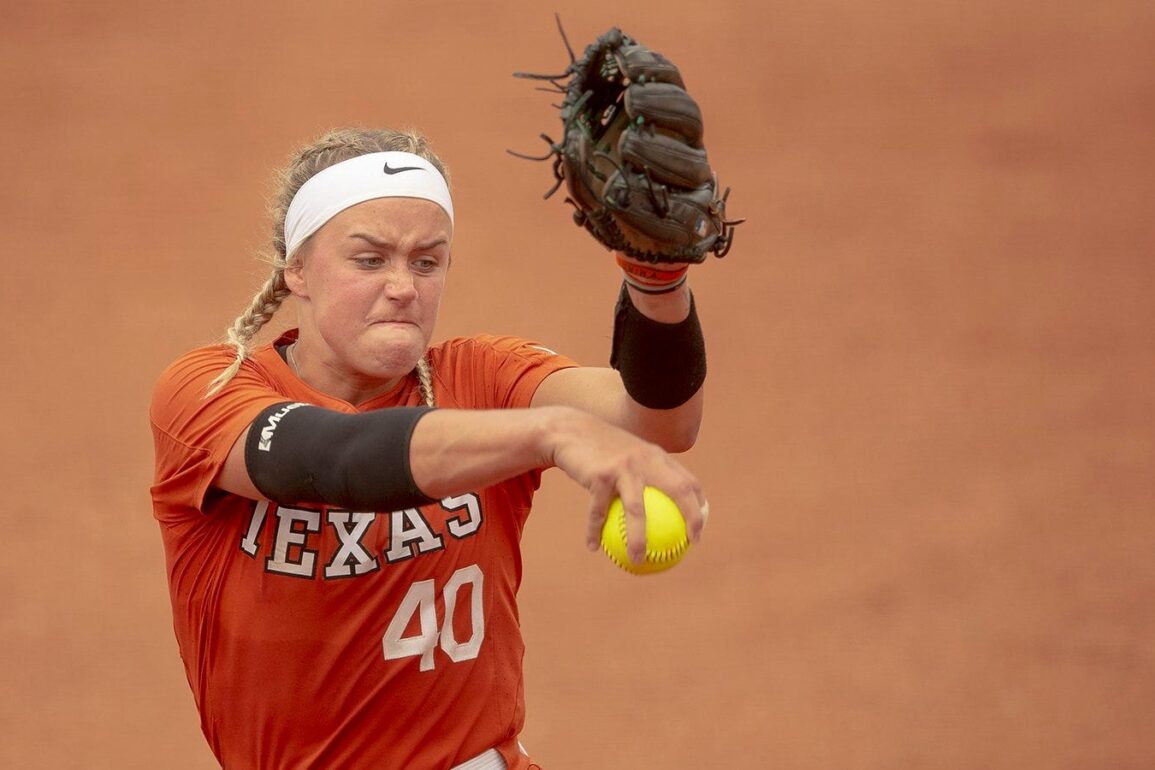
How the SEC’s softball dominance could carry it through to the Women’s College World Series
The Oklahoman’s Jenni Carlson shares the top storylines she’s following through the NCAA softball tournament, starting with the SEC’s biggest strengths.
The road to the 2025 Women’s College World Series is underway with super regionals this weekend, while the NCAA baseball tournament leading into the 2025 College World Series is heating up with conference tournaments.
Both sports involving bats, balls and gloves are among the final major sporting championships in the NCAA calendar year before the summer. While both have similarities in the structure of the sport, the rules and how to play, there are also key differences between them.
Here’s what you need to know about the differences in softball, including the length of a game, the size of the ball and other differences:
College softball is seven innings
A college softball game lasts seven innings and can end after five innings if a team leads by eight runs or more due to the run-rule. On the other hand, a college baseball game is scheduled for nine innings and can end after seven innings if a team leads by 10 runs or more.
The run-rule, or “mercy rule” in softball, has been around for the NCAA tournament and for the WCWS, except for the championship series. That rule started extending into the championship series, starting with the 2023 WCWS championship series between Oklahoma and Texas.
The run-rule in college baseball was implemented by the SEC during the regular season in 2023. However, it was not added to the NCAA tournament or the CWS until this season.
Softball uses a shorter field
According to the NCAA softball rulebook, the official softball field has 60 feet between each base. In baseball, there are 90 feet between bases. The field dimensions of how far back the walls are also smaller in softball compared to baseball.
The rulebook also states that a playing field should have a permanent home-run fence of not more than 235 feet from home plate. In left field, the fence needs to be a minimum of 190 feet from home and 220 feet from center to home, with a six-foot fence.
Here’s a look at the softball rule
“It is highly recommended that the playing field be enclosed completely by sideline fences and a permanent home-run fence in a smooth arc of not more than 235 feet from home plate. If a 6-foot fence, it is highly recommended to be a minimum of 190 feet in left and right fields and 220 in center field. If a 4-foot fence, it is highly recommended to be a minimum of 210 feet in left and right fields and 230 in center field. If a temporary home-run fence is used, it must be secured so as not to collapse on and displace the foul pole. For an unfenced field, an out-of-bounds line shall be used to define dead-ball areas.“
Pitching mound vs pitching circle
In baseball, a pitcher throws off an elevated surface ― called the pitching mound ― and is 60 feet 6 inches from home plate. In softball, the pitcher throws off a flat surface ― referred to as a pitching circle ― and is 43 feet from home plate.
Softball uses a larger ball
A regulation softball is roughly 12 inches in circumference and weighs between 6.7-7.3 ounces. Conversely, a regulation baseball measures 9 inches in circumference, weighs a more uniform 5 ounces. The size difference makes it easier to throw a softball with velocity underhanded versus how it would come out being thrown overhand.
Softballs also tend to be yellow in color, while a baseball is white with red laces.
Softball pitchers throw underhand
As mentioned above, softball pitchers are regulated to throw underhand, while baseball actually does not have a strict rule of a pitcher having to throw overhand. That is why pitchers can sometimes throw at different angles, including sidearm pitchers and submarine (underhand) pitchers.
Rule 10 of the NCAA rulebook goes into great detail on the mechanics of a legal pitch — which include pitching position, taking the signal, start of the pitch, windup, step/stride and delivery.
Per Rule 10.6:
- 10.6.1: Once the hands have separated and the pitching arm begins the clockwise motion that will result in the release of the pitch, not more than 1 1/2 revolutions of the pitching arm may occur.
- 10.6.2: The pitcher’s step/stride to the batter must be continuous.
- 10.6.3: The pitch shall be released underhand and the hand shall travel below the hip.
- 10.6.4: The release of the pitch and follow-through of the hand and wrist must be forward.
- 10.6.5: The pitcher may not make another arm revolution after releasing the ball.
Softball pitching velocity vs. baseball pitching velocity
The differences in distances from home plate in the two sports make up the velocity gap that fans may come to believe exists between the two sports. The distance from the pitcher’s circle to home plate in softball is 43 feet and pitchers throw from flat ground. In baseball, the distance from the pitcher’s mound is 60 feet and baseball mounds are also 18 feet in diameter and in height.
According to TopVelocity.net, a softball with the velocity of 70 miles per hour is equivalent to a 101.2 MPH pitch in baseball after factoring in the distance and how the ball is thrown. At that velocity, a hitter has 0.360 seconds to react. Even a 63 MPH pitch in softball is equivalent to a 91.1 MPH pitch in baseball, which gives hitters a 0.400 reaction time.
Ability to re-enter games
In college baseball, once a player is substituted for another, they are done playing for the rest of the game and are ineligible to re-enter. However, with much smaller softball rosters, that is not the case.
A starter may re-enter the game once they are replaced by a substitute player, as long as the starter assumes the same place in the batting order the substituted player occupied with the initial batting lineup at the beginning of the game. The same applies for starting pitchers, who can start a game, be replaced and then re-enter the circle again.
Here’s Rule 8.4.2 in the NCAA’s rulebook:
“8.4.2 Each starter is entitled to be replaced and to reenter the game one time as long as they assume their original spot in the batting order. Exception: The flex may reenter either in the designated player’s spot in the batting order or in their original (10th, non-batting) spot in the lineup.”
Stealing rules
Due to the difference in size between the fields of softball and baseball, the stealing rules are also different for the two sports. As mentioned above, the bases are 90 feet apart on the baseball diamond and a throw from the back point of home plate to the center of second base is 99 feet. In softball, the bases are 60 feet and a throw from home to second is 84 feet and 10 1/4 inches.
Therefore, while baseball players are allowed to lead offIn base, going as far as they feel they are comfortable without being picked off by the pitcher, softball players are not allowed the same luxury. In softball, a runner is not allowed to run until the ball reaches the catcher.
According to Rule 12.14.2:
“A base runner may not leave the base they attained until the pitcher releases the pitch to the batter. A base runner must be in contact with their base at the time a pitch leaves the pitcher’s hand. Exception: When the pitcher (1) does not allow sufficient time for a base runner to return to a base or (2) delays their release in order to deceive the runner into leaving early, the base runner shall not be called out for being off the base before the pitcher releases the pitch.”
This post was originally published on this site be sure to check out more of their content.









